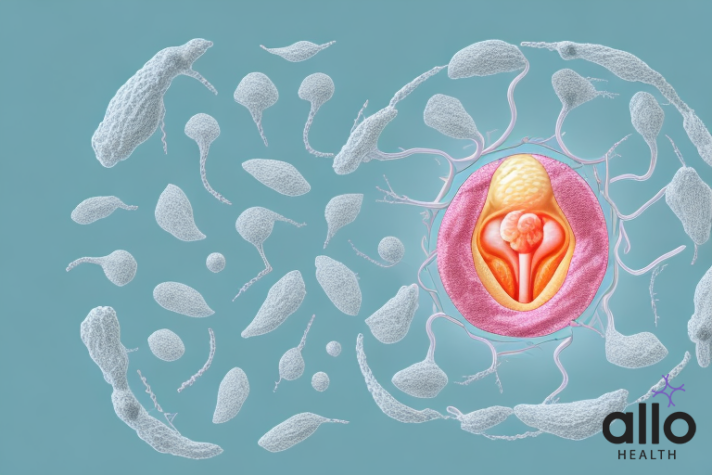Understanding Pelvic Inflammatory Disease: Causes, Symptoms, and Treatment

"The following blog article provides general information and insights on various topics. However, it is important to note that the information presented is not intended as professional advice in any specific field or area. The content of this blog is for general educational and informational purposes only.
Book consultation
The content should not be interpreted as endorsement, recommendation, or guarantee of any product, service, or information mentioned. Readers are solely responsible for the decisions and actions they take based on the information provided in this blog. It is essential to exercise individual judgment, critical thinking, and personal responsibility when applying or implementing any information or suggestions discussed in the blog."
Pelvic Inflammatory Disease (PID) is a serious condition affecting the reproductive system of women. It is caused by bacterial infection that affects the pelvic organs such as the uterus, ovaries, and fallopian tubes. PID can cause serious complications such as infertility, long-term pelvic pain, and even ectopic pregnancy if left untreated.
What Is Pelvic Inflammatory Disease (PID)?
PID is a medical condition caused by the spread of bacteria to the pelvic reproductive organs. It can affect women of any age, but it is most common in sexually active women within the age range of 15 to 24. The infection can start in the cervix or the vagina before spreading to the upper reproductive tract.
Common symptoms of PID include lower abdominal pain, fever, abnormal vaginal discharge, painful urination, and painful intercourse. If left untreated, PID can lead to serious complications such as infertility, chronic pelvic pain, and ectopic pregnancy. It is important to seek medical attention if you suspect you may have PID, as early diagnosis and treatment can prevent long-term damage to your reproductive system.
Causes of Pelvic Inflammatory Disease
The main causes of PID are sexually transmitted infections (STIs) such as chlamydia and gonorrhea. These infections affect the cervix and vagina, causing local inflammation that can spread to other organs in the pelvic region. Other bacteria can also cause PID, including those normally found in the digestive system.
Another cause of PID is the use of intrauterine devices (IUDs) for birth control. While IUDs are generally safe, they can increase the risk of developing PID, especially during the first few weeks after insertion. Women who have multiple sexual partners or a history of STIs are at a higher risk of developing PID when using an IUD.
In rare cases, PID can also be caused by medical procedures such as abortion, childbirth, or pelvic surgery. These procedures can introduce bacteria into the reproductive organs, leading to inflammation and infection. It is important to follow proper hygiene and infection control measures during these procedures to minimize the risk of developing PID.
Risk Factors for Developing PID
Some factors can increase the risk of developing PID, including having multiple sexual partners, having unprotected sex, douching, and a history of STIs. Women who have undergone pelvic surgery or had an IUD inserted may also be at increased risk for developing PID. Having a weakened immune system can also make it more likely to develop PID.
Another risk factor for developing PID is having a sexual partner who has an STI, as this can increase the likelihood of contracting an infection that can lead to PID. Additionally, women who smoke cigarettes may be at increased risk for developing PID, as smoking can weaken the immune system and make it more difficult for the body to fight off infections.
It is important to note that not all women who have these risk factors will develop PID, and some women who do not have any of these risk factors may still develop the condition. However, being aware of these risk factors and taking steps to reduce your risk, such as practicing safe sex and avoiding douching, can help to lower your chances of developing PID.
Common Symptoms of PID
The symptoms of PID can vary from person to person. Some common symptoms include pain in the lower abdomen, fever, vaginal discharge, painful intercourse, and irregular periods. Some women may not experience any visible symptoms, making it crucial to get regular check-ups and screenings for STIs.
It is important to note that if left untreated, PID can lead to serious complications such as infertility, chronic pelvic pain, and ectopic pregnancy. It is recommended to seek medical attention immediately if you experience any symptoms of PID or have been exposed to an STI. Treatment typically involves a course of antibiotics and in severe cases, hospitalization may be necessary.
How to Diagnose Pelvic Inflammatory Disease
A gynecological exam is usually the first step in diagnosing PID. During the exam, the healthcare provider will collect samples of vaginal and cervical fluids to check for any signs of infection. A pelvic ultrasound, blood tests, and laparoscopy may also be used to diagnose PID and assess the extent of damage to the reproductive organs.
It is important to note that not all women with PID experience symptoms. However, those who do may experience lower abdominal pain, fever, abnormal vaginal discharge, painful urination, and painful intercourse. If you are experiencing any of these symptoms, it is important to seek medical attention as soon as possible to prevent further damage to your reproductive organs.
Complications Associated with PID
If left untreated, PID can cause significant damage to the reproductive system, leading to complications such as ectopic pregnancy and chronic pelvic pain. PID can also increase the risk of infertility by causing scarring of the fallopian tubes.
Additionally, PID can lead to the formation of abscesses, which are pockets of pus that can develop in the reproductive organs. These abscesses can cause severe pain and may require surgical intervention to remove.
Furthermore, PID can increase the risk of developing other sexually transmitted infections (STIs) such as HIV. This is because the inflammation caused by PID can make it easier for the HIV virus to enter the body and spread.
How to Treat Pelvic Inflammatory Disease
The treatment of PID typically involves antibiotics to clear the bacterial infection. In some cases, hospitalization may be required if the infection is severe or if there is a risk of complications. The treatment plan will depend on the severity of the infection and underlying health conditions.
It is important to note that while antibiotics can effectively treat the bacterial infection causing PID, they cannot reverse any damage that has already been done to the reproductive organs. Therefore, it is crucial to seek prompt medical attention if you suspect you may have PID, in order to prevent long-term complications such as infertility or chronic pelvic pain.
Antibiotics for Pelvic Inflammatory Disease Treatment
Antibiotics such as doxycycline and ceftriaxone are commonly used to treat PID. Treatment usually lasts for two weeks, and it is essential to complete the full course of medication to prevent the recurrence of infections. In most cases, patients start feeling better within two to three days of starting treatment.
It is important to note that while antibiotics are effective in treating PID, they do not reverse any damage that has already been done to the reproductive organs. Therefore, it is crucial to seek medical attention as soon as possible if you suspect you have PID to prevent any long-term complications such as infertility or chronic pelvic pain.
Alternative Treatments for Pelvic Inflammatory Disease
In addition to antibiotics, some people try alternative treatments to ease PID symptoms. These include herbal remedies, relaxation techniques, and acupuncture. While there is limited research on the effectiveness of these treatments, some people may find them helpful in managing their symptoms.
One herbal remedy that has been studied for its potential benefits in treating PID is tea tree oil. Tea tree oil has antimicrobial properties and may help reduce inflammation in the pelvic area. However, it is important to note that tea tree oil should never be applied directly to the skin, as it can cause irritation. Instead, it should be diluted with a carrier oil and used as a topical treatment.
Lifestyle Changes to Prevent Recurrence of PID
Following healthy habits can help prevent recurrent PID. This includes practicing safe sex, avoiding douching, maintaining good hygiene, and getting regular check-ups and screenings for STIs. Quitting smoking and exercising regularly can also help prevent PID and other health conditions.
In addition to these lifestyle changes, it is important to complete the full course of antibiotics prescribed by your healthcare provider to treat PID. It is also recommended to inform your sexual partner(s) and encourage them to get tested and treated for STIs to prevent reinfection. Taking steps to reduce stress and manage any underlying health conditions can also support overall reproductive health and reduce the risk of PID recurrence.
When to See a Doctor for Pelvic Pain or Discomfort
If experiencing pelvic pain or discomfort, it’s essential to see a doctor as soon as possible. Early diagnosis and treatment can prevent complications and long-term damage to the reproductive system. If experiencing sharp, sudden abdominal pain, heavy bleeding, or high fever, seek medical attention immediately.
Other symptoms that may warrant a visit to the doctor include pain during sex, painful urination, and abnormal vaginal discharge. These symptoms may indicate an infection or other underlying condition that requires medical attention. It’s important to communicate any symptoms or concerns with your healthcare provider to ensure proper diagnosis and treatment.
Preventing Pelvic Inflammatory Disease: Tips and Strategies
Preventing PID requires taking measures to reduce the risk of bacterial infections. These include practicing safe sex, getting regular STI screenings, avoiding douching, and maintaining good genital hygiene. Women who use tampons during their menstrual cycle should change them at regular intervals.
Understanding how to prevent and treat PID is essential for maintaining reproductive health. By implementing healthy lifestyle habits, getting regular check-ups, and staying informed about the condition, we can minimize the risk of PID and ensure optimal reproductive health.
In addition to these preventive measures, it is important to seek medical attention if you experience any symptoms of PID, such as pelvic pain, abnormal vaginal discharge, or fever. Early diagnosis and treatment can prevent the infection from spreading and causing long-term damage to the reproductive system. It is also important to communicate with your sexual partner(s) about any potential STI risks and to encourage them to get tested and treated if necessary.






































